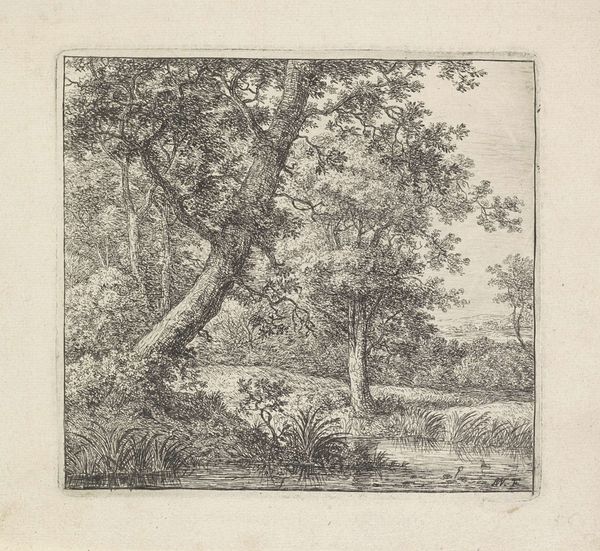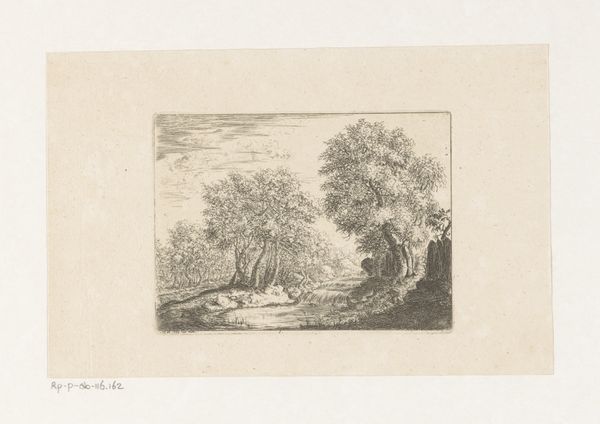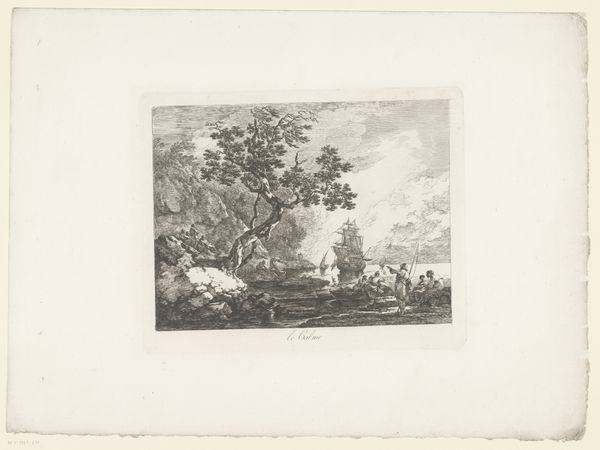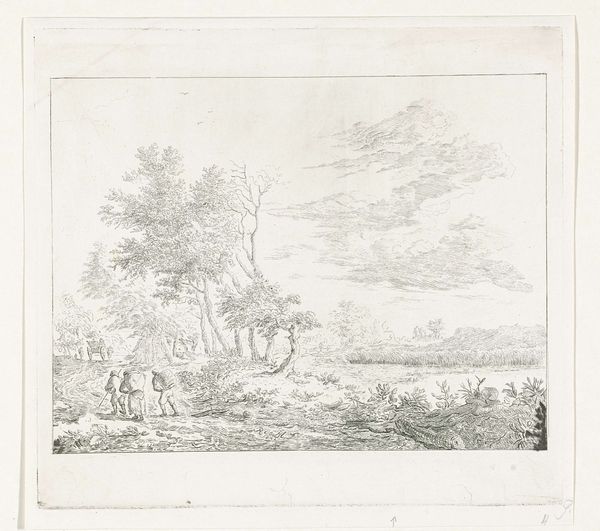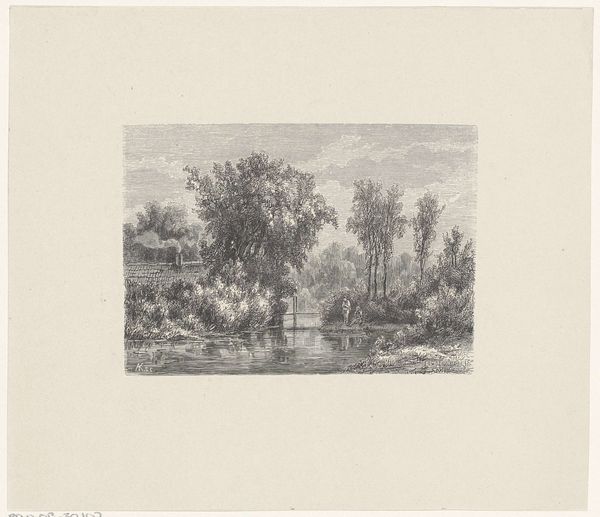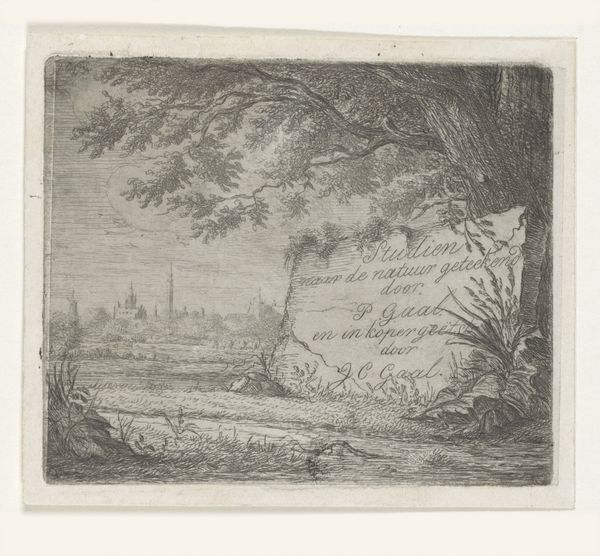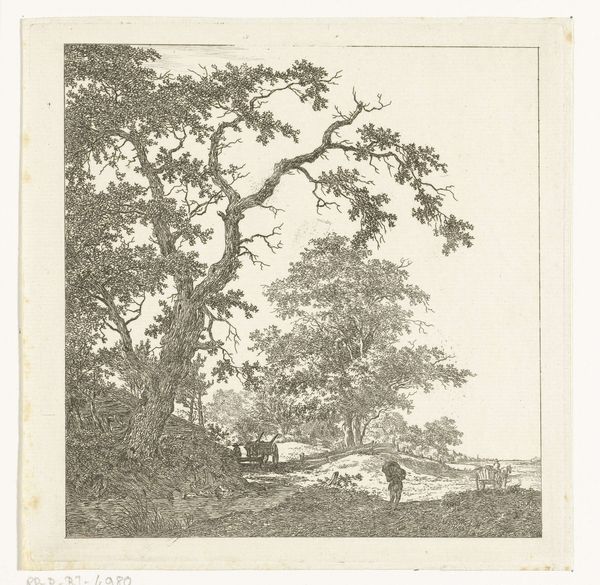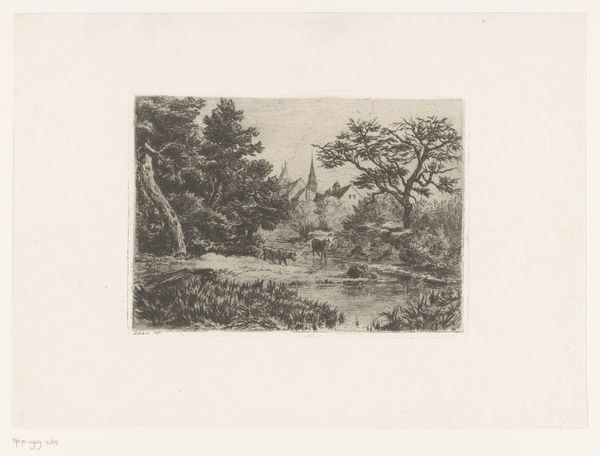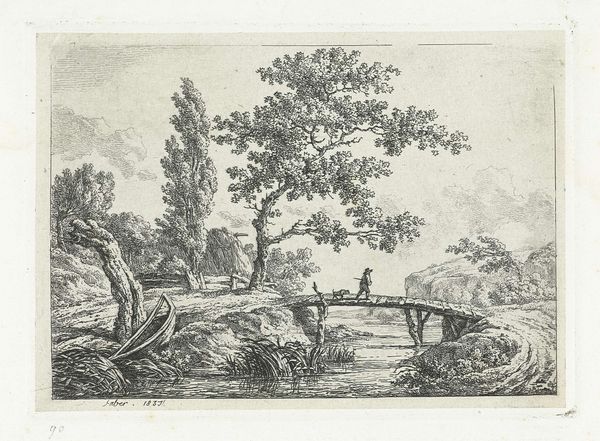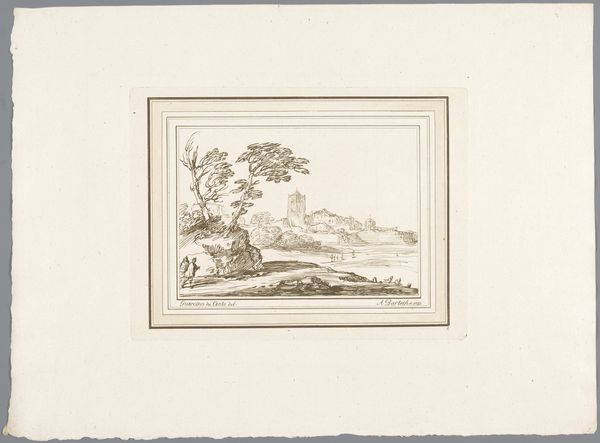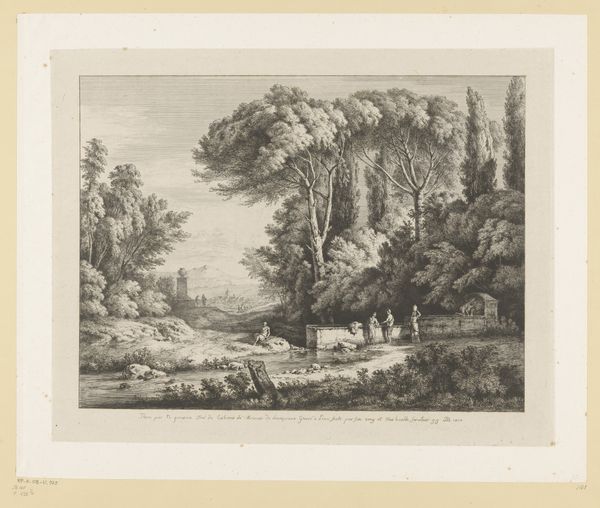
print, etching
#
narrative-art
#
dutch-golden-age
# print
#
etching
#
landscape
#
realism
Dimensions: height 102 mm, width 149 mm
Copyright: Rijks Museum: Open Domain
Editor: We’re looking at Pieter Langendijk's etching, "River View with Two Figures on the Shore," made sometime between 1693 and 1756. It has such a delicate feel to it. I'm curious, what stands out to you about it? Curator: It's interesting how Langendijk positions these figures in relation to the broader landscape. They're not just placed within it, but seem to be consciously engaging with the cultivated, almost manicured scene. Think about the burgeoning merchant class of the Dutch Golden Age; prints like this were affordable and celebrated their connection to land and prosperity, suggesting leisure and ownership. Do you think the inclusion of these kinds of narrative details affects the genre? Editor: That's a great point. The figures do add a layer of narrative to what could otherwise just be a simple landscape. Does the fact that it's a print, and therefore reproducible, also contribute to its social impact? Curator: Absolutely. Printmaking democratized art, allowing wider access to images that reinforced specific social values. This piece also aligns with the era's fascination with Realism; observe how the architecture in the background suggests power, wealth, and control over the natural environment, a kind of symbolic assertion for the patrons who enjoyed collecting and displaying works such as these. Do you agree? Editor: Yes, that makes a lot of sense. Seeing it as more than just a landscape, but as a carefully constructed statement about wealth and societal values, really changes my perspective. Curator: Exactly. And that contextual understanding allows us to appreciate it as not just a pleasing image, but a potent historical document. I learned something as well from your insight to narrative within realism. Thank you. Editor: Thanks! I will definitely be thinking about how prints democratized art now.
Comments
No comments
Be the first to comment and join the conversation on the ultimate creative platform.
